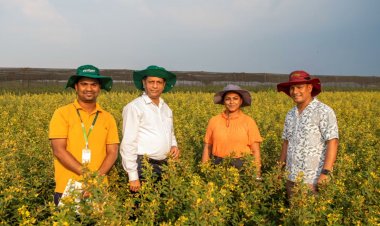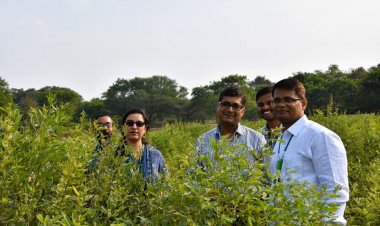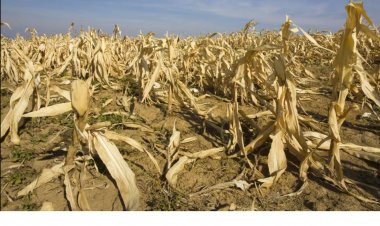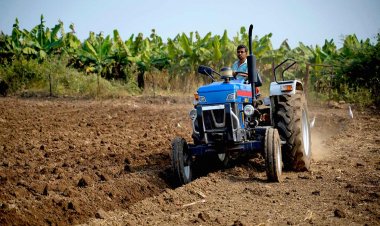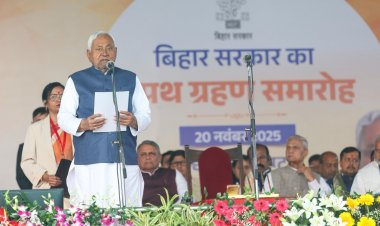Rural Voice Special: Process millets with low-cost dehuller machines and earn 2-10 times profit
In view of the increasing demand for millets, the government is working on technology transfer and developing value-added products. The CIAE Regional Centre, Coimbatore, has developed a millet dehuller machine that can be used at a small scale in villages to de-husk the millets. It has made de-husking millets extremely easy. And the problem of broken grains, too, has been minimized.
Millets are generally known for their high nutritional value. And in view of the growth prospects of bajra (pearl millet) and other millets in the international market over recent years, farmers have got interested in their production in our country, too. Malnutrition and other health-related issues like diabetes and obesity can be seen in India due to the lack of variety in food. In order to minimize these risks, people are being advised to include millets — jowar (sorghum), bajra, ragi (finger millet), kutki (little millet), korra (foxtail millet), chena/barr (proso millet), sanwa (barnyard millet) and arke (kodo millet) — in their diet.
But the biggest problem with millets is that farmers do not get fair prices. Their grains being small, it needs too much of labour to de-husk the millets. And if sold with husk, they fetch too low prices. With a view to getting over this problem, the millet dehuller machine has been developed. Dr S Balasubramanian, Head, Central Institute of Agricultural Engineering (CIAE) Regional Centre, Coimbatore, spoke about the millet dehuller machine in the Rural Voice Agritech Show. You may watch this episode of the show by clicking on the video link given above.
Dr Balasubramanian said that while the Green Revolution focused on the major cereals of wheat and rice, millets lagged behind. But today the world has begun to understand the importance of millets, which are good for nutrition due to their being rich in protein, fibre, vitamins, iron etc.
Millets can be used better in the diet or turned into their products only after being de-husked, said Dr Balasubramanian. But the problem is that the husk remains glued to the millet grains. Conventionally, the husk is removed by the women in millet-producing regions manually with a mortar and pestle or a wooden/stone grinder. While doing so, the grains are broken. Or, the husk gets mixed with the millet, leading to flour of inferior quality. Besides, the process consumes a lot of labour and time. These problems led to a decline in the consumption of millets in the millet-producing regions. The villages lacked the infrastructure for local processing.
Dr Balasubramanian said during the show that in view of the increasing demand for millets, the government is working on technology transfer and developing value-added products. “Our institute has developed a millet dehuller machine that can be used at a small scale in villages to de-husk the millets. It has made de-husking millets extremely easy. And the problem of broken grains, too, has been minimized.”
With the help of this machine, said Dr Balasubramanian, 60-65kg of de-husked grains can be obtained from 100kg of millets. He said that the machine could be installed in a 10-by-12 feet room and run on a single-phase current. One person alone can easily operate it. This machine can easily de-husk 10-12 types of millets.
Dr Balasubramanian said the machine that worked as a cleaner, stoner and dehuller cost Rs 80,000. If you include the grader and packing technology, the machine costs Rs 2-2.5 lakh. Dr Balasubramanian said that the processed millets fetched the farmers 2-10 times of profit.
Abhay Kumar, an entrepreneur from Rohini in Delhi who processes millets, uses the millet dehuller machine in Bawana. He said at the Rural Voice Agritech Show that he bought the machine for about Rs 55,000 in the year 2015. It runs on a single-phase current and can easily be operated by a single person. It can de-husk 60-70kg of millets in an hour.
Kumar said that he processed several millets, including kodo, ragi, little millet and barnyard millet. He said that the machine could de-husk 1-10 quintals of millets in a day as per the needs. Speaking about its advantage, he said that his profit had grown by Rs 20-25 per kg as compared to earlier. He suggested that farmers in the village could earn substantial profits by using the low-cost millet dehuller. Besides, it could also serve as a source of employment.



 Join the RuralVoice whatsapp group
Join the RuralVoice whatsapp group

















